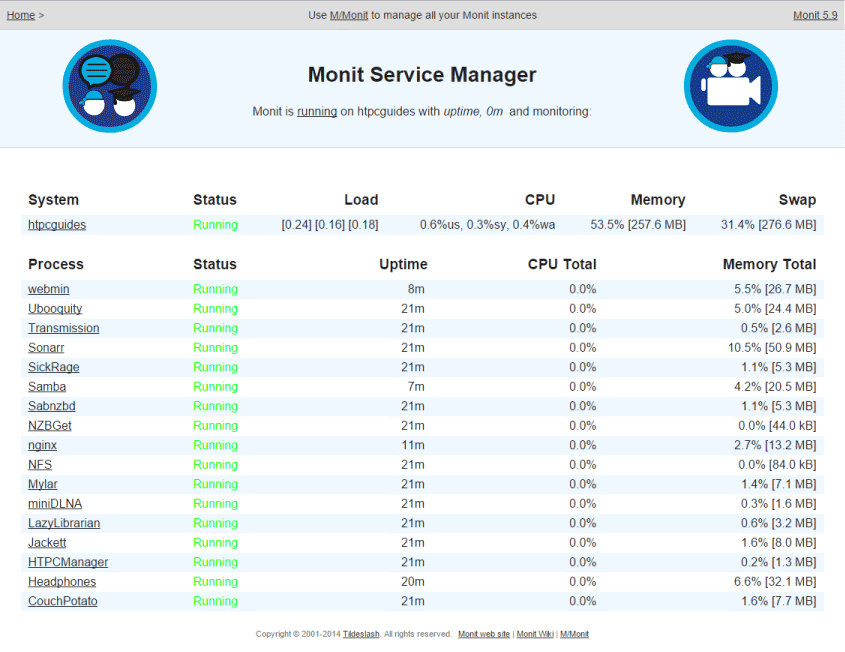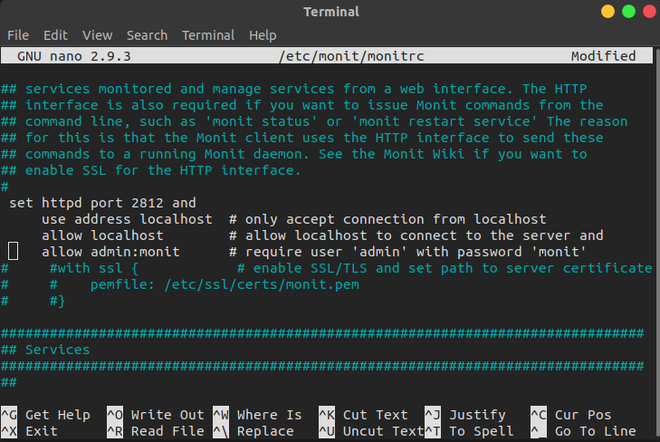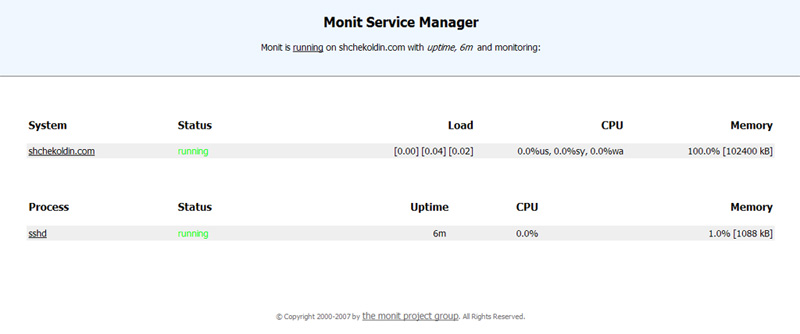

Save and close the file, then restart the Monit service to apply the changes. If disk write > 500 kb/s for 10 cycles then alert


If disk read > 500 kb/s for 10 cycles then alert If totalmem > 200.0 MB for 5 cycles then restart Stop program = "/usr/bin/systemctl stop httpd" Start program = "/usr/bin/systemctl start httpd" with timeout 60 seconds #set log syslogĬheck process apache with pidfile /var/run/httpd/httpd.pid nano /etc/monitrcĪdd/modify the following lines to define your Apache server. Once the Apache package is installed, start and enable the Apache service with the following command: systemctl start httpd
Monit web port install#
If not installed, you can install it with the following command. Step 6 – Monitor Apache Service with Monitįirst, the Apache package must be installed on your server. You should get the following information. To check your system information, run the following command. Monit provides a command line tool to monitor your Linux system via cli. Step 5 – Monitor Linux System Via Command Line You can check it with the following command. systemctl restart monitĪt this point, the Monit web interface is enabled and listens on port 2812. Next, restart the Monit service to apply the changes. Save and close the file, then verify the Monit configuration file with the following command. nano /etc/monitrcĬhange the following lines to enable the web interface and define the Monit admin username and password. You can enable it by editing the Monit default configuration file. Monit also provides a web interface to monitor your system and services. Jan 04 22:14:35 archlinux monit: 'archlinux' Monit 5.32.0 started Jan 04 22:14:35 archlinux monit: Starting Monit 5.32.0 daemon with http interface at :2812 Jan 04 22:14:35 archlinux systemd: Started Pro-active monitoring utility for unix systems. Loaded: loaded (/usr/lib/systemd/system/rvice disabled preset: disabled)Īctive: active (running) since Wed 22:14:35 EST 4s ago

Monit web port update#
Save and close the file, then update all the package indexes with the following command: pacman -Syu Step 3 – Install Monit Monitoring Toolīy default, the Monit package is included in the Arch Linux default repository. Remove all lines and add the following lines: # Score: 0.7, United States You can do it by editing the mirrorlist configuration file: nano /etc/pacman.d/mirrorlist Step 2 – Configure Repositoryīy default, the default repository is outdated in Arch Linux, so you will need to modify the default mirror list. Connect to your Cloud Server via SSH and log in using the credentials highlighted at the top of the page. Create a new server, choosing Arch Linux as the operating system with at least 2GB RAM. Step 1 – Create Atlantic.Net Cloud Serverįirst, log in to your Atlantic.Net Cloud Server.
Monit web port password#
A root password configured on your server.A fresh Arch Linux server on the Atlantic.Net Cloud Platform.
Monit web port how to#
In this post, we will show you how to install and use the Monit monitoring tool on Arch Linux. It has the ability to automatically start a process if it’s not running, restart one if it’s not responding, and stop a process if it’s consuming too many resources. If something is wrong, Monit can notify you instantly via email. Monit allows you to check the status of processes, files, directories, checksums, permissions, and filesystems via the command line interface. Monit is a free, open-source, lightweight monitoring tool used to manage and monitor services on Linux operating systems.


 0 kommentar(er)
0 kommentar(er)
